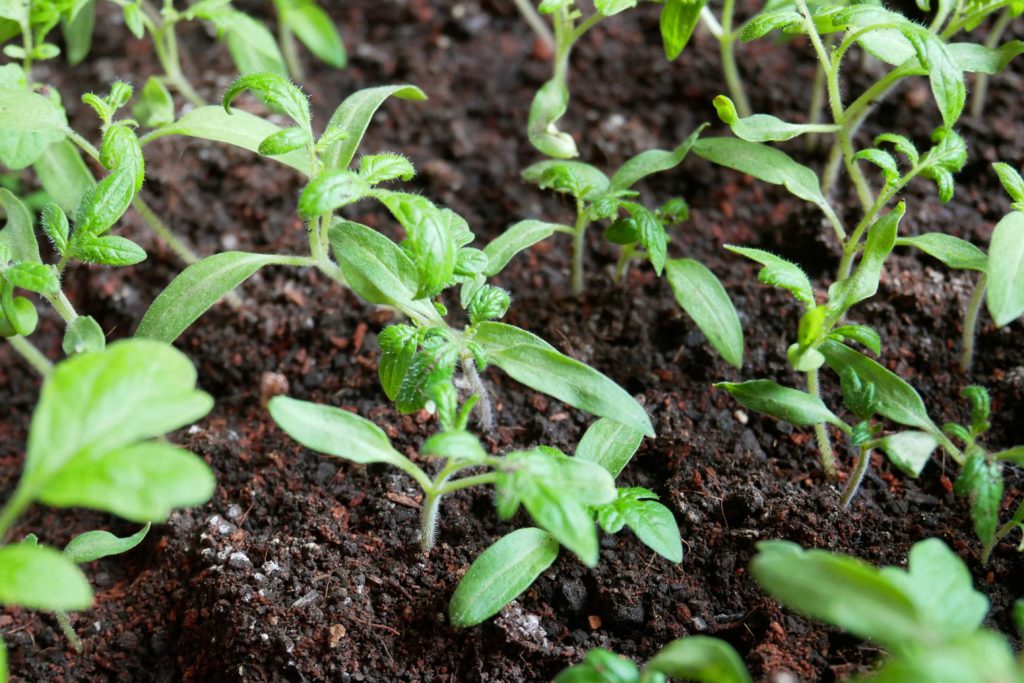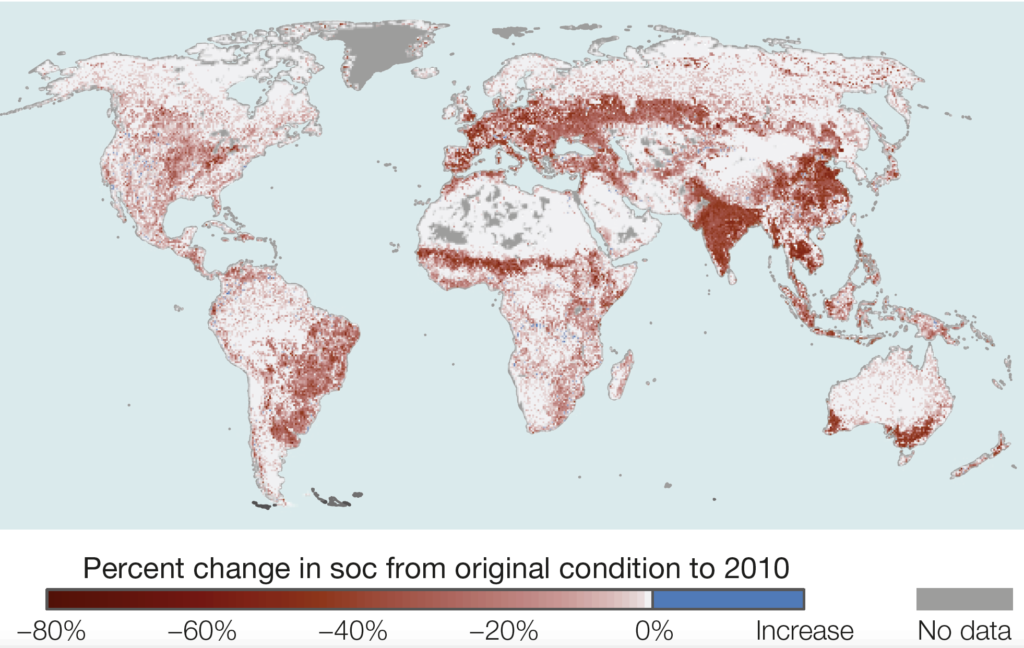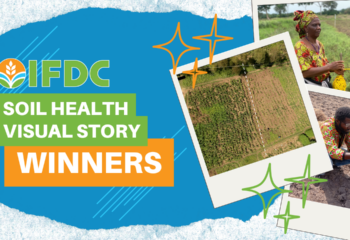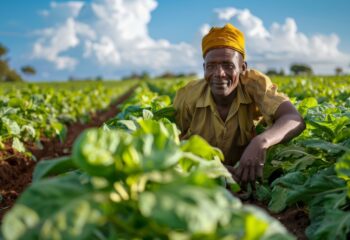
Written by Prem Bindraban, Program Leader, Fertilizer Research and Responsible Implementation (FERARI); Rob Groot, Director of Global Partnerships; and Upendra Singh, Vice President of Research / Posted Courtesy of Fertilizer Focus
The United Nations Food Systems Summit (UNFSS) is scheduled to take place in September 2021 and the growing attention to soils emerging on its agenda is encouraging. Soils are generally understood to be needed to produce food. Less common is the notion that soils also are crucial to produce nutritious foods, close water and nutrient cycles and serve as a major sink for atmospheric carbon. Moreover, soils are the most important resource for farmers to earn a living.
Despite warnings by the scientific community, decades of undervaluing the importance of soil health and plant nutrition have caused significant soil degradation worldwide. Therefore, heightened attention is needed to regenerate soil health to nutritiously feed the world, mitigate climate change and enhance the resilience of agricultural systems. Consultation among CEOs of leading global industries and industry associations, as part of the preparations for the UNFSS, calls for a global initiative to address soil health and carbon sequestration, through which private and public sector partners take joint responsibility for reversing climate change, while ensuring food and nutrition security. In the context of this global initiative, the International Fertilizer Development Center (IFDC) argues for more attention in raising awareness about soil nutrients, with specific attention to the African continent.
“Decades of undervaluing the importance of soil health and plant nutrition have caused soil degradation.”
Why soil nutrients?
Soil nutrients, primarily nitrogen (N), phosphorus (P), and potassium (K) but also sulphur (S), calcium (Ca), zinc (Zn), iron (Fe), and eight other micronutrients, are building blocks for soil microbes and plants to grow and essential for human health through food consumption. Nutrients are naturally supplied by the soil or can be added via mineral and organic fertilizers. Approximately 50% of all food produced globally is derived from the use of mineral fertilizers, which makes the fertilizer industry a key player in global food and nutrition security. In many parts of the world, mineral fertilizers are used in excess, leading to losses to the environment that must be addressed. On the African continent, however, average fertilizer use is about 10% of the global average, and the continent’s soils, particularly those in sub- Saharan Africa (SSA), are among the most nutrient-deficient in the world. The amounts of nutrients applied are less than the amounts extracted by plants, which causes rapid depletion of soil nutrients (up to 50kg of N, P, and K per hectare), degradation of organic matter and increased erosion. This largely explains the continent’s low and even declining agricultural production and the resulting downward spiral into hunger and poverty. In SSA, per capita food production has been decreasing over the past decades, while food imports continue to increase. More than 70-80% of the food production increase in SSA over the past decades has been due to the expansion of agricultural land at the expense of nature and biodiversity. Land clearing is the largest source of greenhouse gas emissions on the continent. Further expansion would be detrimental and has reached its limit in many countries, especially those in the Sudano-Sahelian zone. Therefore, agricultural intensification in Africa is the only sustainable way forward, as reverting to pre-green revolution farming will not meet the food and nutrition security challenge of the rapidly growing population.
Reinforcing organic or agroecological production systems without raising the overall soil nutrient levels will worsen hunger and poverty on the African continent. The amount of nutrients internal to the current production system that can naturally be supplied by soils to plants is inadequate to raise the crop yields and profitability of farming systems. Efforts should certainly be made in recycling organic waste to complete the nutrient cycle and get nutrients back to farms where they are needed, which will simultaneously prevent nutrient pollution in urban areas and concentrated feedlots, but efficient use of mineral fertilizers in combination with organic amendments in SSA is needed to restore and rehabilitate degraded ecosystems and soil functions for sustainable and profitable food production.
Managing Nutrients
“Increasingly, the public and private sector are collaborating to develop fertilizers.”
Nutrient use, either mineral or organic, needs particular attention in SSA. Poorly managed nutrient applications can decrease profitability and increase nutrient losses, potentially degrading water and air quality. In contrast, properly managed fertilizers support cropping systems that provide economic, social, and environmental benefits. Optimized use of the Right mineral fertilizers at the Right rate, at the Right time, and in the Right place (the 4R principles), in combination with organic amendments, is the foundation to achieving food system goals, i.e., increased production of nutritious food, increased farmer profitability, enhanced environmental protection, and improved sustainability.
Sustainable food systems produce more with less: increased efficiency of land, water, nutrients, and labor make it possible to increase productivity and profitability per unit area. This prevents unnecessary expansion of agriculture into pristine lands, averting deforestation and loss of biodiversity, and creating synergies – instead of competition – between agriculture and livestock. Responsible and efficient use of mineral fertilizer protects natural ecosystems from conversion of pristine lands for food and feed production and allows farmers to manage existing food production systems sustainably, to the benefit of both nature and people.
Most currently used fertilizers were developed at least 50 years ago, and their efficiency is largely dependent on their management. Erratic climatic conditions, poor water- and nutrient-holding capacity and therefore low buffering capacity of soils (due to low organic matter content) cause low fertilizer use efficiency with low returns on investments for smallholder farmers in Africa. This hampers farmer adoption.
Increasingly, the public and private sector are collaborating to develop fertilizers and fertilizer recommendations that are better tuned to these location-specific conditions to maximize efficiency. Yet, novel, climate-smart, and higher efficiency fertilizers, and management practices and products that utilize integrated fertilizers, organic amendments, and biofertilizers will also be needed to enhance uptake by plants, reduce losses to the environment, and improve soil health. While some novel products are available or underway, public and private sector partners must increase investment in the development of smart fertilizers that feed soils, plants, and people safely with minimal trade-offs.
“In most of Africa, without external nutrient inputs, soil organic matter will not increase, soil health will not improve, and crop yields will remain low. Promotion of biological or agroecological agriculture without external input systems will worsen hunger and poverty, resulting in further costs of food imports and the devastation of millions of lives.”
Albin Hubscher, President and CEO of IFDC
Soil Carbon
A strong driver of soil health and productivity is the amount of soil organic matter (SOM) contained in the soil. Since most soils on the African continent have low SOM content, often only 0.5-1.0% or even less, any improvement on SOM will have direct beneficial effects. Building and restoring SOM is key to improving soil health and productivity. The most effective and sustainable way to sequester carbon (C) is with in-situ SOM buildup – most practically with root biomass and crop residues, in combination with tree crops when feasible. An aboveground biomass of 10 metric tons (mt) produces 2-3 mt of root biomass and 4-5 mt of crop residue throughout the crop cycle, but to produce this biomass, most soils in SSA will require enhanced soil nutrient levels via mineral fertilizers. The principles of regenerative agriculture remain important, but the limited amount of nutrients in most African soils cannot catalyze this process of additional biomass production and, therefore, more SOM. There will be no increase in SOM and no improvement in soil health without external nutrient input. To store soil C, we need carbon from the atmosphere (C), nitrogen (N), phosphorus (P), and sulfur (S) at a ratio of roughly C:N:P:S = 100:10:1:1. Soil C sequestration may be feasible at an annual rate of 100-300 kg C ha–1 when accompanied by mineral fertilizer amendments of 10-30 kg N ha–1, 1-3 kg P ha–1, and 1-3 kg S ha–1 (though part of the S may come from deposition). Therefore, we must raise the ecosystem carrying capacity through improving soil fertility and soil health by increasing SOM through external nutrient input, namely, mineral fertilization.

This map demonstrates decline in soil organic carbon (SOC), an indicator of soil
degradation, relative to an estimated historical condition that predates anthropogenic land use.
Global carbon trade is in its infancy, but it has the potential to become part of the solution. New methods to aggregate carbon credits from millions of smallholder farmers and new satellite imagery-based technologies for third-party verification of increases in soil organic matter stocks, will create on opportunity for the fertilizer industry to buy carbon credits, leading to new financial flows to support African farmers with input and/or market access financing, and to drive pre-investments for the buildup of soil organic matter and healthy soils. This opportunity has great potential to contribute to the triple challenge of food and nutrition security, climate mitigation, and resilient food systems. While global carbon pricing mechanisms are being developed, leading IT and logistics companies have become frontrunners in voluntary investments in carbon credits, increasingly supported by the banking sector; this may be source of inspiration for the fertilizer sector.
Plea for collective soil health investments
Soil restoration and rehabilitation is 10 to more than 100 times slower and more difficult to attain than degradation of soil and soil organic matter. So how do we ensure food and nutrition security and protect our ecosystem? Science, evidence-based data, and decision support tools can identify management scenarios and their outcomes for specific land and cropping/grazing systems. Such tools utilize data on soil properties, hydrology, topography, weather, and land capability classification to assess the suitability of a given land and, when combined with modeling, determine the long-term productivity and sustainability of a given practice. Land planners, policymakers, and the private sector, guided by global bodies, must act on those recommendations, considering social, economic, and cultural issues and balancing trade-offs. In the end, we researchers, implementers, governments, and other partners are responsible for maintaining the health of this resource.
Public and private sector partners must increase investment in the development of smart fertilizers
Ample scientific evidence shows that more and better fertilizers are needed on the African continent to develop farming systems that guarantee food and nutrition security, mitigate climate change, and protect the environment. This will require coordinated action from governments, industry, the research community, and donors/investors to positively impact the livelihoods of 2 billion people in Africa by 2050. It can be done – together!
Note: This article is adapted from IFDC’s ‘Game changing solution’ submitted to the United Nations Food Systems Summit.



